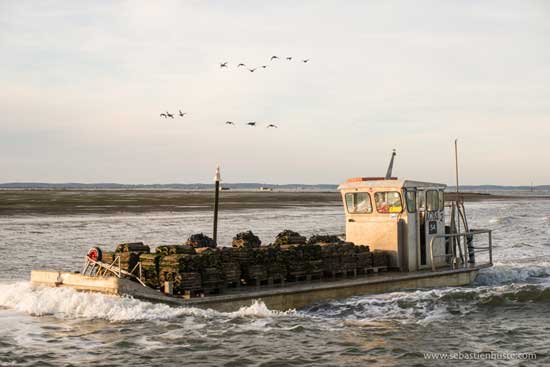Over hundreds of years, the Arcachon Bay has been known, and recognised, for its oysters. Oyster farming activity grew in the area over time, gradually transforming this land into a land marked by oyster production. This terroir can be seen in the landscapes. Limewashed tiles, pignots, barges and flat-bottomed boats, as well as oyster farms and beds, ports, oysters huts and storehouses are all emblematic images of this little piece of paradise.
The Arcachon Bay is made up of 23 oyster ports and villages. Each has its own charm and personality. The oyster farmers welcome locals and passing visitors to their colourful huts to enjoy an oyster tasting session with their feet dangling in the water.
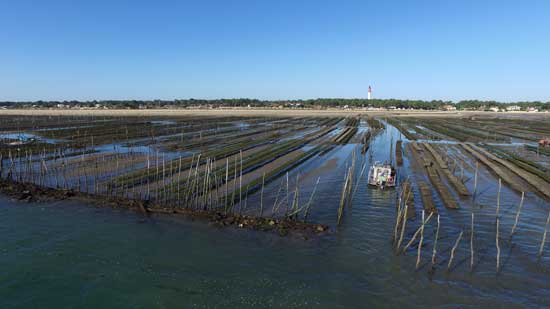
The Arcachon Bay offers geographical and climatic conditions that are favourable for the production of oysters. It is this ideal and unique combination that provides it with its typicality. This typicality is characterised by:
A tidal lagoon – Sheltered from the ocean, this lagoon and its ecosystems have been providing conditions that are conducive to the reproduction and growth of oysters for several centuries.
An ideal temperature – Arcachon Bay is a shallow depth, real inland sea where the rapid warming of its waters (+10 °C between March and June) promotes the reproduction of oysters.
Perfect salinity levels– The salinity of the water in the Bay is ideal, thanks specifically to the fresh water inflows from the River Leyre.
Auspicious light conditions The shallow depth of the water allows light to penetrate to the ground which, combined with the influx of fresh water and ocean water – and therefore food – generates the production of high levels of phytoplankton in these areas.
A preserved watershed – Covered by the Landes forest, the watershed for this body of water plays a natural protective role by ‘purifying’ the runoff water that filters in to the Bay.
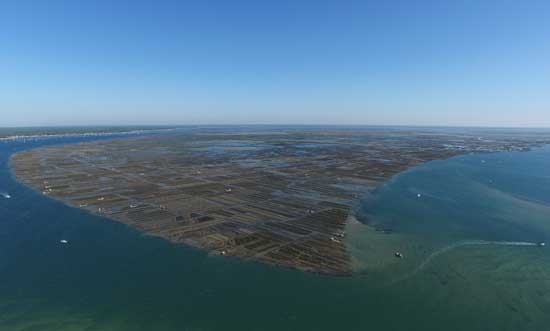
The Arcachon Bay supplies 60% to 70% of the 4.5 billion young oysters that are required for all French production. Up to 27 million collectors are installed there each summer. The egg-laying process is made possible thanks to the natural conditions of the Bay, which favour the reproduction of oysters. To lay eggs, the oysters must be in water that it is at a temperature of between 21 °C and 24 °C, with sufficient light and moderate levels of salinity. The waters of the Arcachon Bay are shallow and therefore always have sufficient light. The mixture of sea water entering through the channels and the fresh water arriving via the River Leyre to the south-east of the Bay, makes it possible to ensure optimal levels of salinity for oyster reproduction are maintained.

Oysters are raised in farms. The State allows oyster farmers to use part of the seabed. This space is the public maritime domain.
An oyster farm is an area that is granted by the State. The size of the farms can vary from a few hundred to a few thousand square metres and it is not a question of ownership, but of a right of use. This right is granted via a deed of concession in return for duties and a fee.
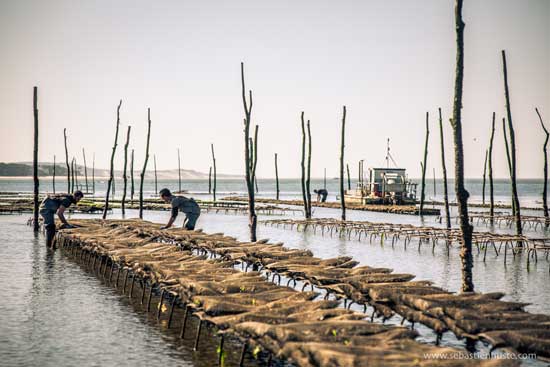
The huts are the workplaces of oyster farmers. When they are not out on the tide taking care of their oyster beds, oyster farmers will use their huts to calibrate, screen or package their oysters. They are also friendly places where they can sell their produce and the farmers can welcome gourmet lovers for a tasting session or provide them with advice.
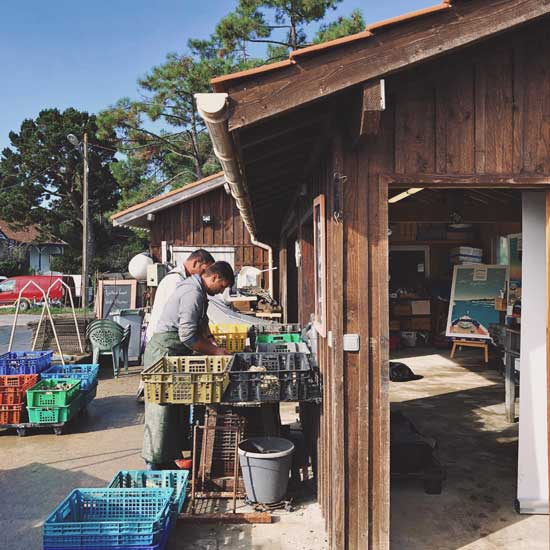
Life in Arcachon Bay is organised according to the tides. The nature of the tides causes a body of water to flow from the entry channels to the eastern coast, which is the furthest away, and vice versa. The work of Arcachon Bay oyster farmers is punctuated by this natural phenomenon. When the coefficient is greater than 70, we speak of “a high tidal range (spring tides)”, when the oyster farmers then go out on the “tide”. Three hours before low tide time, the oyster farmers use their barges to work on their farms and return when the tide rises, about 3 hours after low tide. When the coefficient is less than 70, we talk of “low tidal ranges (neap tides)”. This is when the oyster farmers stay ashore. They work at their huts. The time of the tide changes every day by around 50 minutes. In order not to miss the times of the tides, oyster farmers refer to the tide directory. This shows the time of low tide. Depending on the geographic location of the farms, oyster farmers will estimate the time when their oyster beds will be uncovered.
